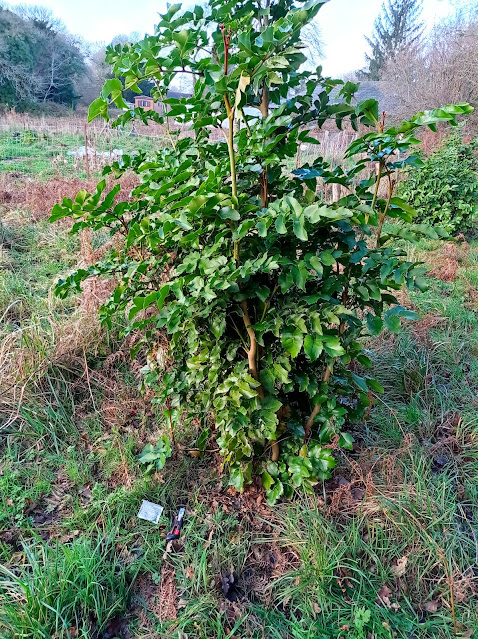Elm tree project (ulmus species). I became interested in elm trees and the sad fact that the elm tree disease wiped out our native elm trees. I corresponded with Eric Collin, head of the elm tree research of the french INRA at the time, and was thrilled when he asked me whether i would like to plant elm trees on my land. I agreed, and he arranged for me to pick up and plant 50 different elm trees that the INRA was trialling for elm tree disease resistance. The trees are a mixture of clones that were taken from trees all over france that survived the elm tree disease and also consist of seed-grown trees from open pollinated seed of disease resistant cultivars such as Lutèce and others. Elm trees usually succumb to the disease when their trunks have a diameter between 4 to 10 inches resulting in a situation where there aren't any mature elm trees anymore. The elms i planted grew well until the protections started to weaken the third year and now i have quite a lot of deer damage. This is not dramatical because elms always sprout back from the roots but it's annoying because you lose 2 or 3 years worth of tree growth. If what i hope for and envisage will ever come true, my little elm tree patch will be quite amazing because it will be a miniature elm tree forest where you can walk in, and be totally "in the elms". Surrounded by elm trees on all sides, something that cannot be experienced elsewhere
anymore nowadays. I also managed to obtain a true english elm (ulmus procera), a very special elm tree that used to dominate certain parts of the UK and whose disappearance is deplored by many. I also got an english field elm from the british elm conservation project, that tries to save these trees. Both trees are clones from surviving trees.
silhouette of typical elm branches
very "elmy" bark of one of the trees
Bark of another tree looking very different.







Comments
Post a Comment